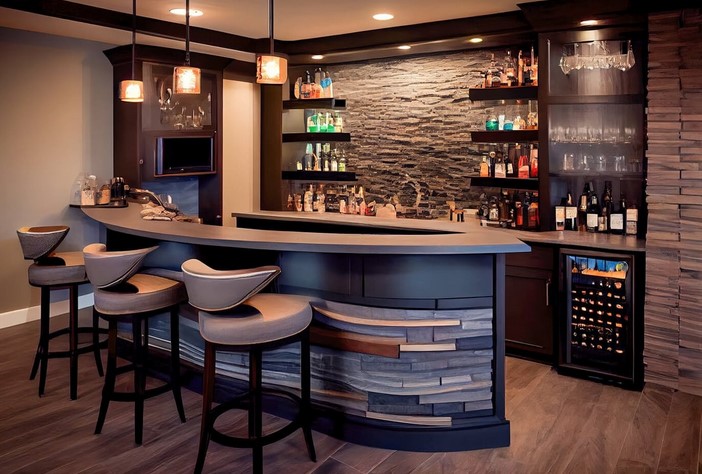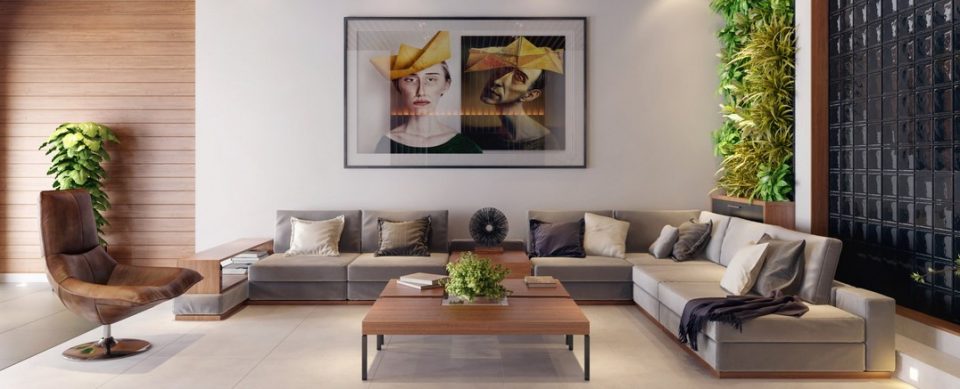
Source:https://dropinblog.net
A well-designed home bar can be the perfect addition to your living space, whether you’re hosting a casual get-together or preparing for a special celebration. DIY home bar designs allow you to create a personalized, stylish space that enhances your home’s entertainment potential while reflecting your own tastes and style. With the right approach, materials, and creativity, you can build a home bar that complements your interior décor and provides a fun, functional environment for friends and family. In this article, we’ll explore how to design and build a home bar on your own, from conceptualizing the space to adding the finishing touches.
1. Planning Your DIY Home Bar
The key to creating a successful DIY home bar design is thorough planning. This will ensure that your bar not only looks great but also serves its purpose efficiently, offering a comfortable space for socializing, mixing drinks, and enjoying good company. Let’s break down the essential planning steps that will help you get started.
A. Determine the Space
The first thing you need to consider when planning your home bar is the space available. Depending on the size of your room or area, you can choose from a variety of bar designs. The space will also dictate the type of bar you can build, whether it’s a small, sleek countertop for intimate gatherings or a larger, more elaborate setup that can accommodate multiple guests.
Here are some popular options:
- Compact Bar: If you have limited space, a compact home bar design may be the best solution. A narrow countertop with a few shelves or cabinets for storage is a practical choice that works in smaller living rooms, kitchens, or even alcoves.
- Corner Bar: Utilizing corner spaces is a great way to maximize square footage. A corner bar can offer plenty of seating, while still leaving the rest of the room open for other activities.
- Freestanding Bar: For larger spaces, a freestanding bar allows flexibility and can serve as a statement piece in the room. These can be designed to fit into the décor of your home while offering ample storage and functional workspace.
- Wet Bar: If you’re looking for something more advanced, you may want to incorporate a sink or even a small fridge into your design. A wet bar gives you more functionality, allowing you to mix drinks without needing to go to the kitchen.
B. Choose Your Design Style
Once you’ve decided on the size and location of your bar, it’s time to choose the style. The design of your home bar should complement your overall interior décor. Whether you’re creating a modern, industrial space or a rustic, cozy nook, the materials you choose and the aesthetic you create will impact the feel of your bar area. Here are some popular styles to consider:
- Modern and Minimalist: Clean lines, sleek finishes, and simple furnishings are key to a modern home bar. Choose materials like stainless steel, concrete, or glass, and opt for a monochromatic or neutral color palette.
- Rustic and Farmhouse: For a more relaxed, welcoming space, consider using reclaimed wood, exposed brick, and vintage accessories. A rustic home bar can feel cozy and inviting, perfect for casual evenings.
- Industrial Chic: An industrial-style bar often incorporates raw materials like metal, wood, and concrete. Think exposed piping, wire shelving, and a mix of rustic and modern elements to create a dynamic look.
- Classic or Traditional: A traditional home bar might feature wood cabinetry, classic bar stools, and rich, elegant finishes like dark wood or marble. This style suits more traditional homes and adds an air of sophistication.
C. Consider Functionality and Features
While aesthetics are important, functionality is key when designing a home bar. Think about what you will need to make your bar both usable and enjoyable. Here are some features to consider:
- Storage: Your home bar should include ample storage for bottles, glasses, tools, and other bar essentials. Open shelving is a stylish and functional option, but closed cabinets or drawers can also be used to hide clutter.
- Bar Tools: Make sure to incorporate a designated space for your bar tools, including cocktail shakers, stirrers, bottle openers, and strainers. Magnetic strips or pegboards can be an efficient way to store them.
- Lighting: Proper lighting is essential for setting the mood and highlighting your bar. Pendant lights, under-cabinet lights, or even LED strips can add both style and functionality. Adjustable lighting is a great option for different occasions.
- Seating: Depending on your bar’s size and layout, consider adding bar stools, chairs, or even built-in bench seating. Comfort should be a priority, especially if you plan to host extended gatherings.
2. Building Your DIY Home Bar
Now that you’ve done your planning, it’s time to get into the hands-on part of your DIY home bar designs. Building your home bar can be an enjoyable and fulfilling project, especially if you enjoy working with your hands. Below is an overview of the general steps involved in building your own bar.
A. Gather Materials and Tools
Before you begin, make sure you have all the materials and tools you’ll need. Some common materials used for home bar construction include:
- Wood: For cabinetry, countertops, and shelves. Plywood or solid hardwood can be used, depending on your budget and desired look.
- Metal: For bar frames, shelving brackets, or hardware.
- Glass: For shelving, backsplash, or decorative panels.
- Paint/Stain: To finish wood surfaces or add color to your bar.
- Countertop Material: Choose from a variety of options such as wood, granite, marble, or laminate based on your style preferences and budget.
In terms of tools, you’ll need basic woodworking tools such as a saw, drill, hammer, level, tape measure, screws, and possibly a power sander or paintbrush.
B. Construct the Frame and Base
Start by constructing the frame of the bar. This will form the backbone of your structure, supporting the countertop and providing storage. Depending on the design, the frame may include legs, side panels, and shelving. Use screws and wood glue for extra durability. If you’re building a larger bar, consider adding a reinforced base to support the weight of the countertop and any appliances, like a mini-fridge.
C. Install Shelving and Cabinets
Next, build and install shelves or cabinets for storage. Shelves can be open for easy access or closed for a more streamlined look. If you choose cabinets, install doors that match your design style. Custom cabinetry can give your bar a professional, polished appearance, but pre-built options can also be a great cost-effective solution.
D. Attach the Countertop
The countertop is the most important surface of the bar, and it should be both functional and aesthetically pleasing. Depending on the materials you’ve chosen, this could involve simply laying the countertop in place or securing it with screws and adhesive. Be sure to leave enough space for bartending tools, glasses, and beverages.
E. Add Finishing Touches
Finally, complete your DIY home bar design with finishing touches that add both style and function. This could include adding lighting, installing a backsplash, and selecting décor such as artwork, mirrors, or plants. Adding bar stools or other seating will provide comfort and make the bar more inviting for guests.
3. Maintaining and Personalizing Your Home Bar
Once your DIY home bar is complete, it’s time to enjoy it! But like any home feature, regular maintenance will keep your bar in top shape and extend its lifespan.
A. Regular Cleaning
Ensure that your bar remains clean and organized. Wipe down the counter regularly, and make sure to clean glassware and bar tools after every use. Keep the shelving tidy, and periodically check the condition of the wood or metal for wear.
B. Personalization
Don’t forget to personalize your home bar to reflect your unique style. Display your favorite liquor bottles, add a few decorative items like framed photos or vintage bar signs, and include elements that make the space feel truly yours.
In conclusion, DIY home bar designs offer an excellent way to create a personalized, stylish, and functional space for entertaining. With careful planning and creativity, you can design and build a home bar that fits your needs and complements your home’s aesthetic. From selecting materials and style to adding the perfect finishing touches, the process of building a home bar is an exciting project that enhances your space and provides the perfect spot for socializing with friends and family. So, gather your materials, roll up your sleeves, and start building your dream home bar today!
